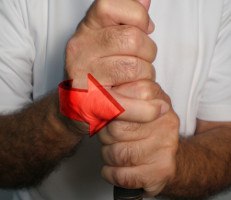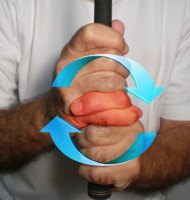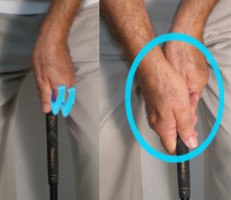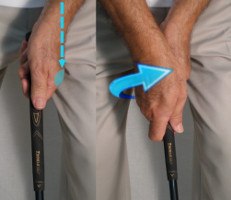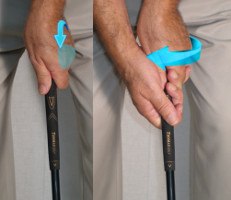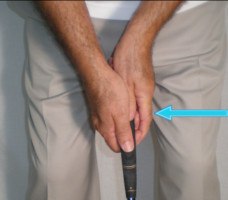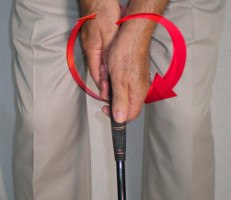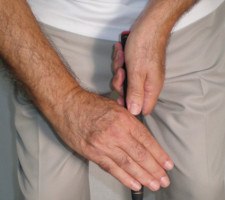Pros and Cons of Every Golf Grip Style |
Best Grip? Overlapping vs Interlocking |
Grip style: Interlocking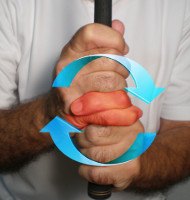 |
Hand position: strong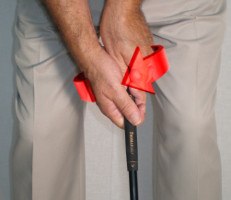 |
Putting grip style / hand position: Reverse overlap / neutral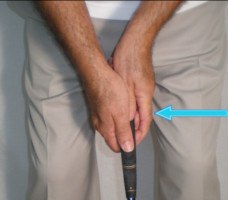
|

Sure, he’s 6’2”, 180 pounds and flexible as a gymnast. Natural gifts aside, Nick Watney’s grip is still designed for power.
Watney’s strong grip is a sign of the times, for sure. Many big golfers, not content to rely on their innate strength, seek extra distance via the powerful release a strong grip provides. Think Bubba Watson, Keegan Bradley and J.B. Holmes, among others.
Watney fits the same mold. Rather than grip the club in a neutral fashion, the Fresno State alum twists his left hand well to the right on the club’s handle. Looking face-on, you can see that the “V” formed by thumb and index finger points toward Watney’s right shoulder. There’s also a dramatic angle between the back of the hand and his wrist.
Mirroring this position, Watney’s right hand points the “V” up the right arm with the slightest bow in the back of his wrist. By contrast, a neutral right hand’s “V” is aligned with the handle and the wrist is cupped.
No doubt about it, the grip supplies a great deal of power. Except for a slight dip in 2013, Watney typically averages around 300 yards per drive.
Nick Watney’s grip with the putter is also strong which, unlike his full-swing grip, is a relative rarity. Wand in hands, Watney rotates his mitts well to his right rather than aligning them with the handle’s flat front surface. This method appears to allow for more wrist action in Watney’s stroke and is similar to Brad Faxon’s highly effective putting grip.
Watney, however, does not enjoy Faxon-like success on the greens. The four-time PGA TOUR winner ranked 115th in strokes gained putting for 2014.
